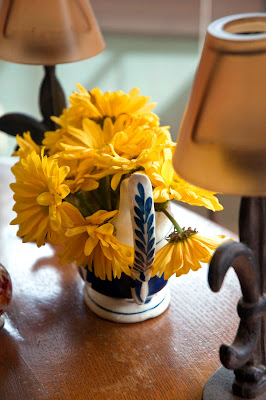Boots on the Ground, 2011
We went down to South Carolina last week to watch our nephew graduate from U.S. Army Basic Training. Aside from the obvious pride in watching our nephew graduate, the best part was listening to his description of his experience, which if you want to use motion picture metaphors, fell somewhere between Full Metal Jacket and Stripes.
He began the experience mentally and physically prepared. He’d spent the months before reporting for duty getting into shape. He’d read up on the experience. This served him well as he and his fellow “warriors”-in-training endured fourteen weeks of long days and nights of arduous physical conditioning, training, brain numbing bureaucracy and persistent browbeating.
Our nephew described the two most important things to know before you show up for Basic Training, the first being not to do anything that calls attention to you and the second being to do only what you’re ordered to do (and nothing more).
These guidelines are simple, but were a challenge for our nephew, who’s always been an achiever. The first morning he was there someone took his running shoes. This made it necessary for him to show up at his first physical training formation as the only person wearing the official Army t-shirt, the official Army workout shorts and in place of his running shoes the official Army combat boots and knee-high green socks. “I knew I was in for it,” he reports, “and the worst part was that I hadn’t even been there forty-five minutes.”

YOU LADIES CALL THIS A FORMATION? 2011
The structure and rituals of Basic Training are not unlike life in prison. The new soldier is allowed nothing but what the Army wants him or her to have. In prison, cigarettes are the unit of economic negotiation. In basic training, which our nephew described as a “prison economy,” the most highly valued tokens among the new recruits were cough drops and stamps.
Not that anyone actually had time, mind you, to write anything that uses stamps. The whole idea of Basic Training is to break you down and build you back up in the Army’s mold. That doesn’t leave much time for writing long, contemplative letters.
Indeed, the hardest part of Basic Training for our nephew was the lack of intellectual stimulation; fourteen weeks of near complete isolation from any news and information. It seemed especially ironic to me that this young man, whose next phase will be fourteen months of intensive training in the Arabic language, has no idea what’s been going on in Egypt and elsewhere throughout the Arab world.
Needless to say, there were no newspapers or magazines, no television, radio, cell phones, computers or Internet. Family members were able to write letters to soldiers in training. You could also send news clippings. But most of it was subject to confiscation and even that which got through could only be reviewed for a few minutes before it had to be turned over to a drill sergeant to be destroyed.
Like in prison, soldiers figured out how to get around some of these regulations. They learned, for example, that since soldiers are allowed to keep a small cache of “personal religious materials," you could get most anything to a soldier in basic training if you could either 1) put it in the form of a prayer or 2) started your letter with the words, “The Lord said…”
In the end, it’s probably a good thing that these young warriors in training didn’t have much time to think or relax. To be sure, someone would have gotten around to doing a little long division and figured out what all this ordeal was earning them on an hourly basis. Let me assure you, we taxpayers get a good deal with these young men and women of the Third Battalion of the Sixtieth Infantry Regiment.

It's an Army Thing, 2011





























